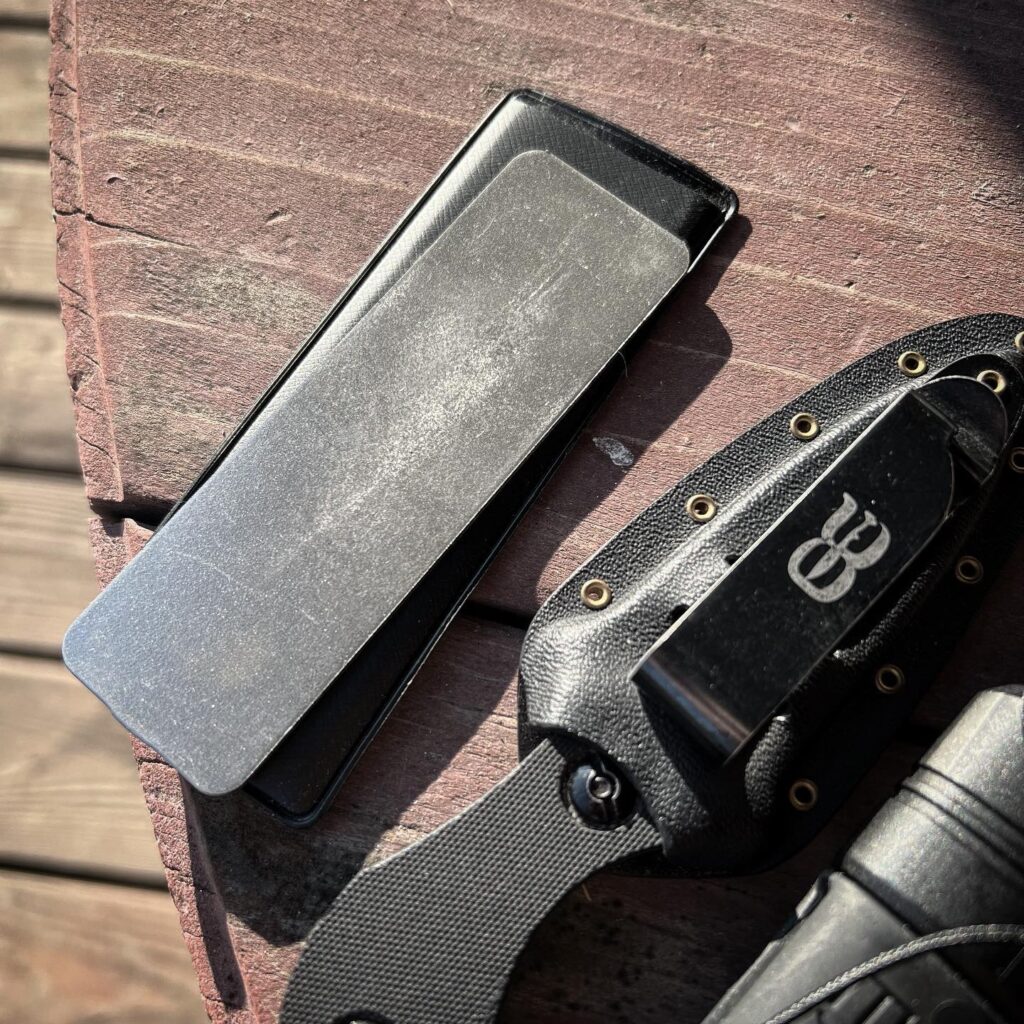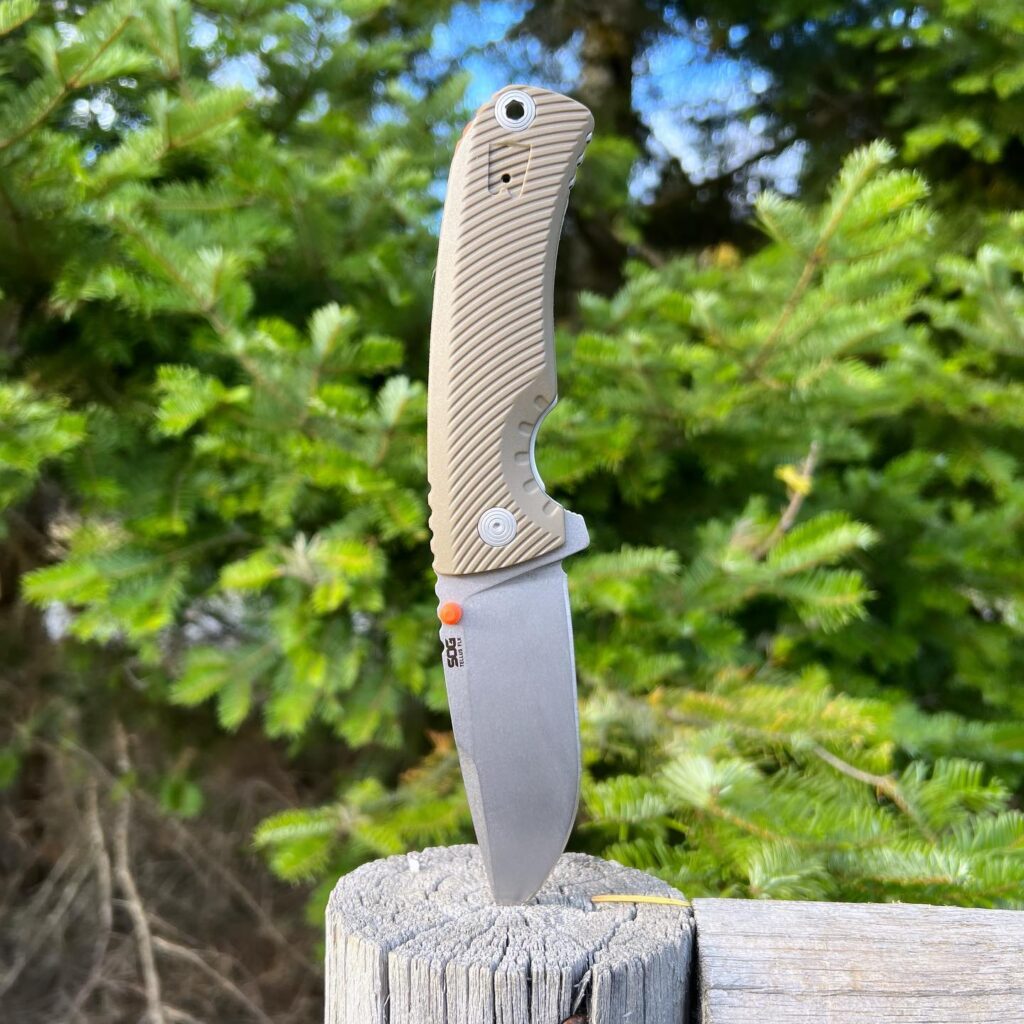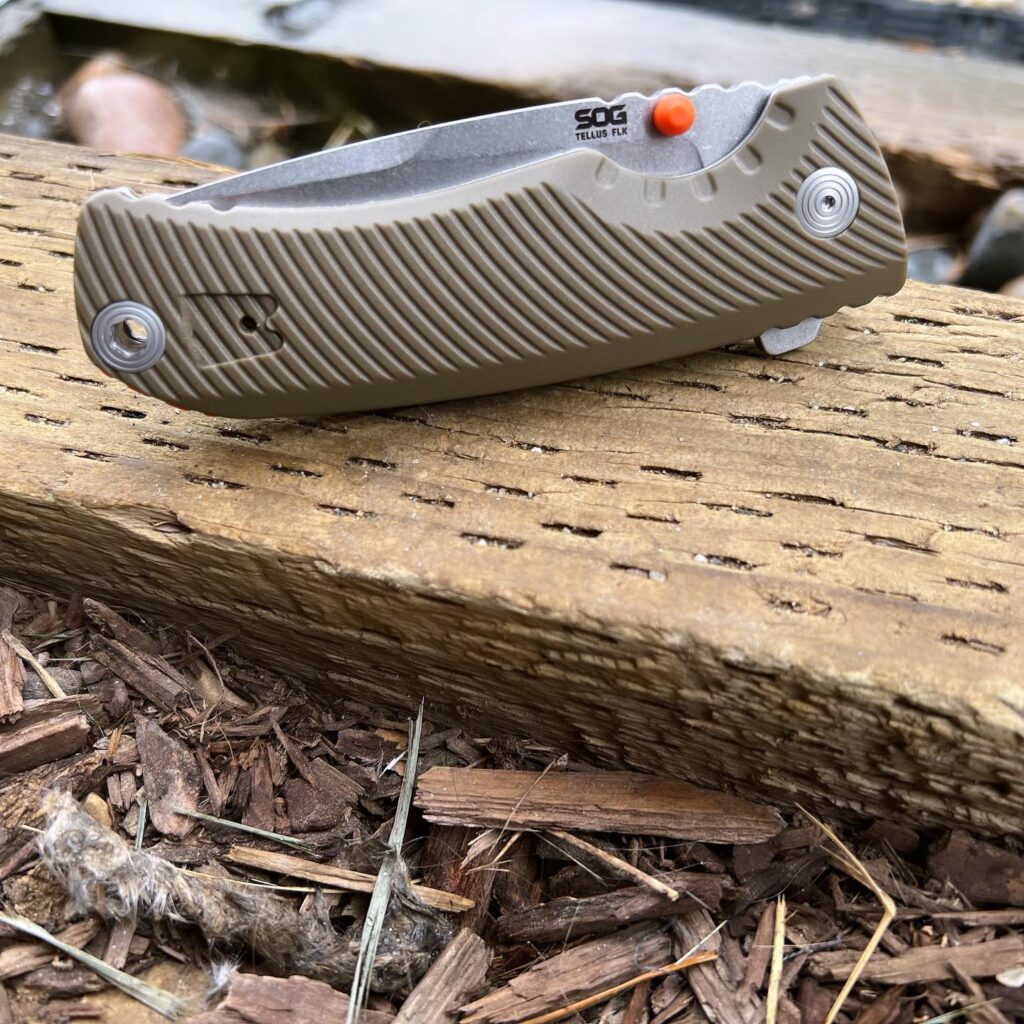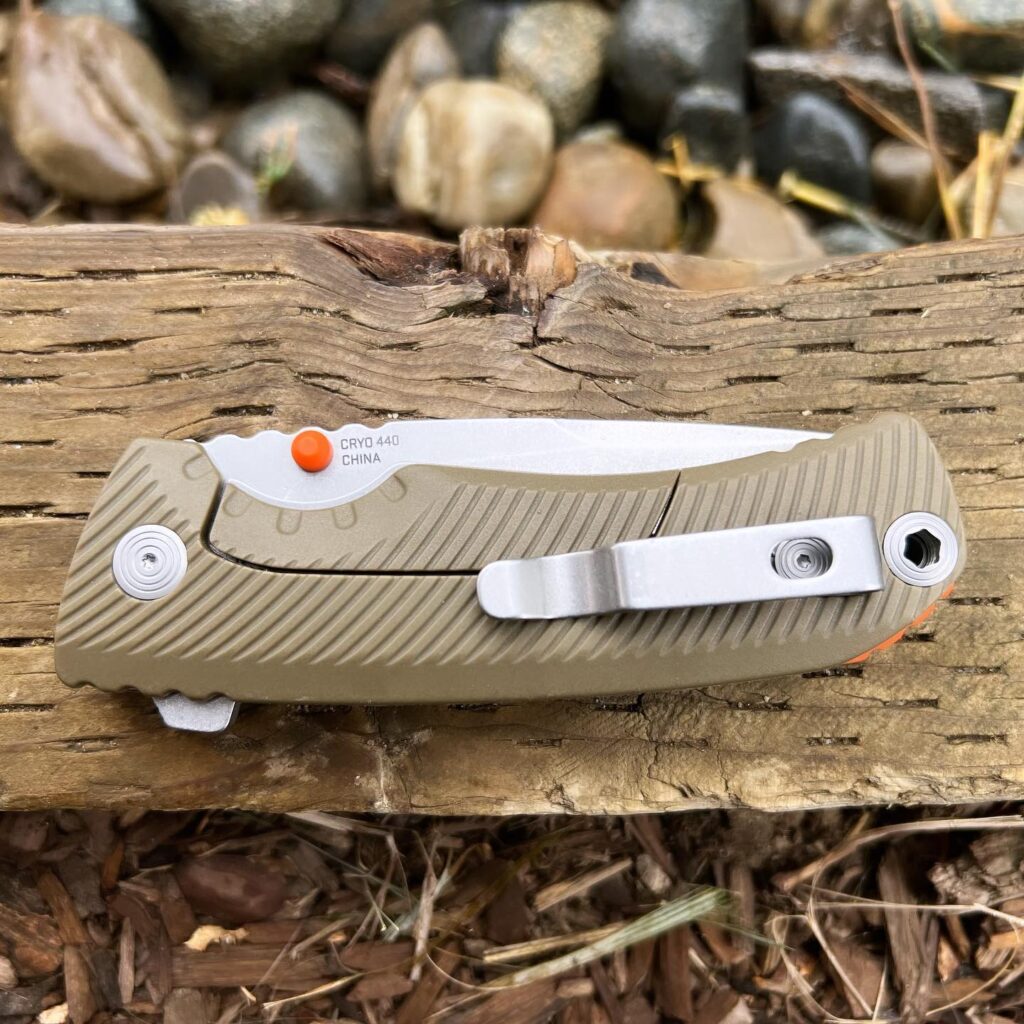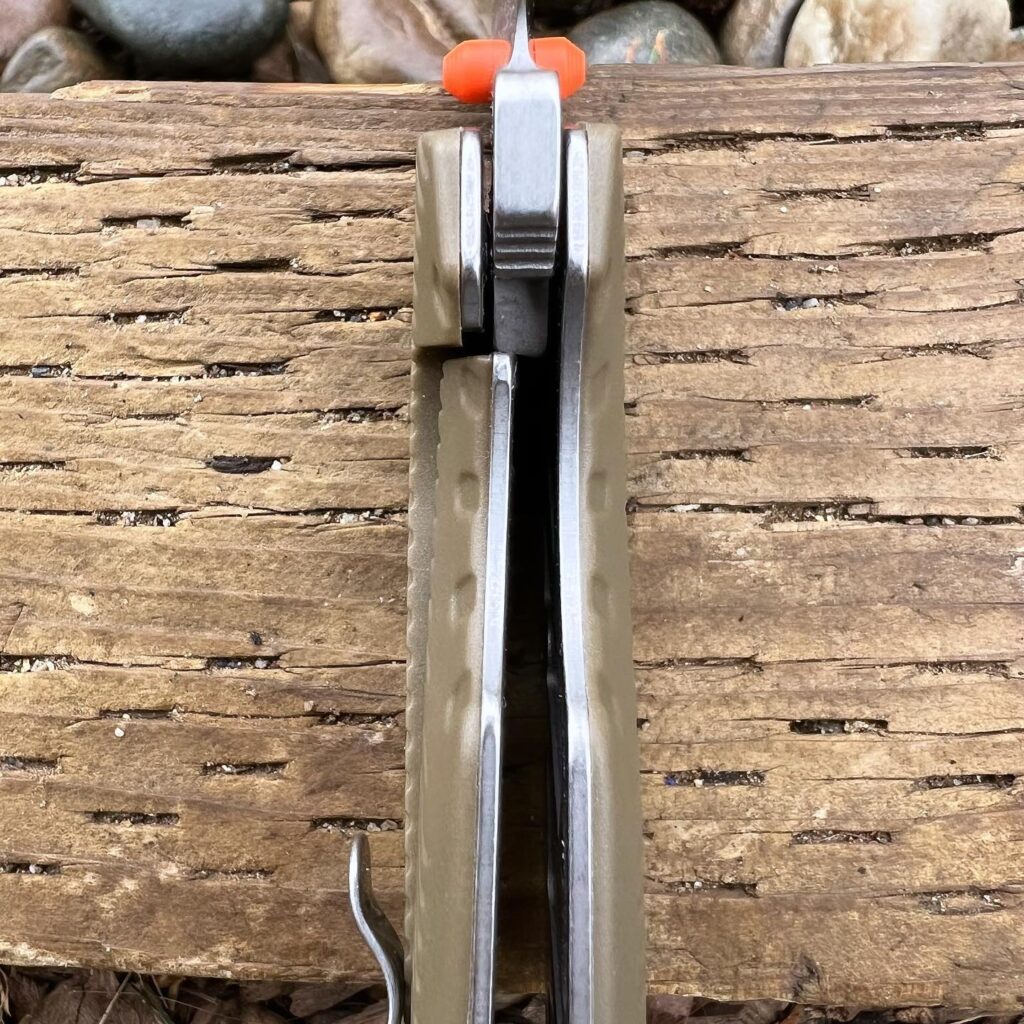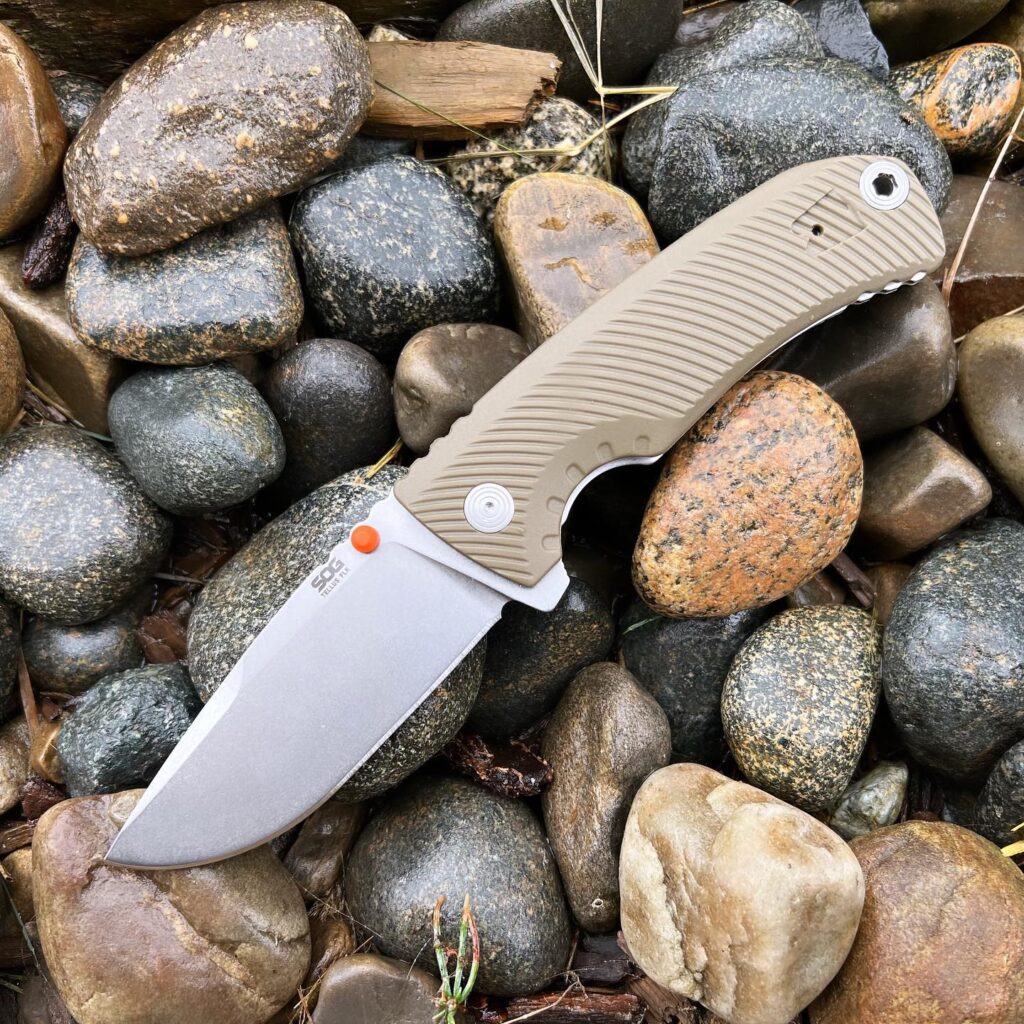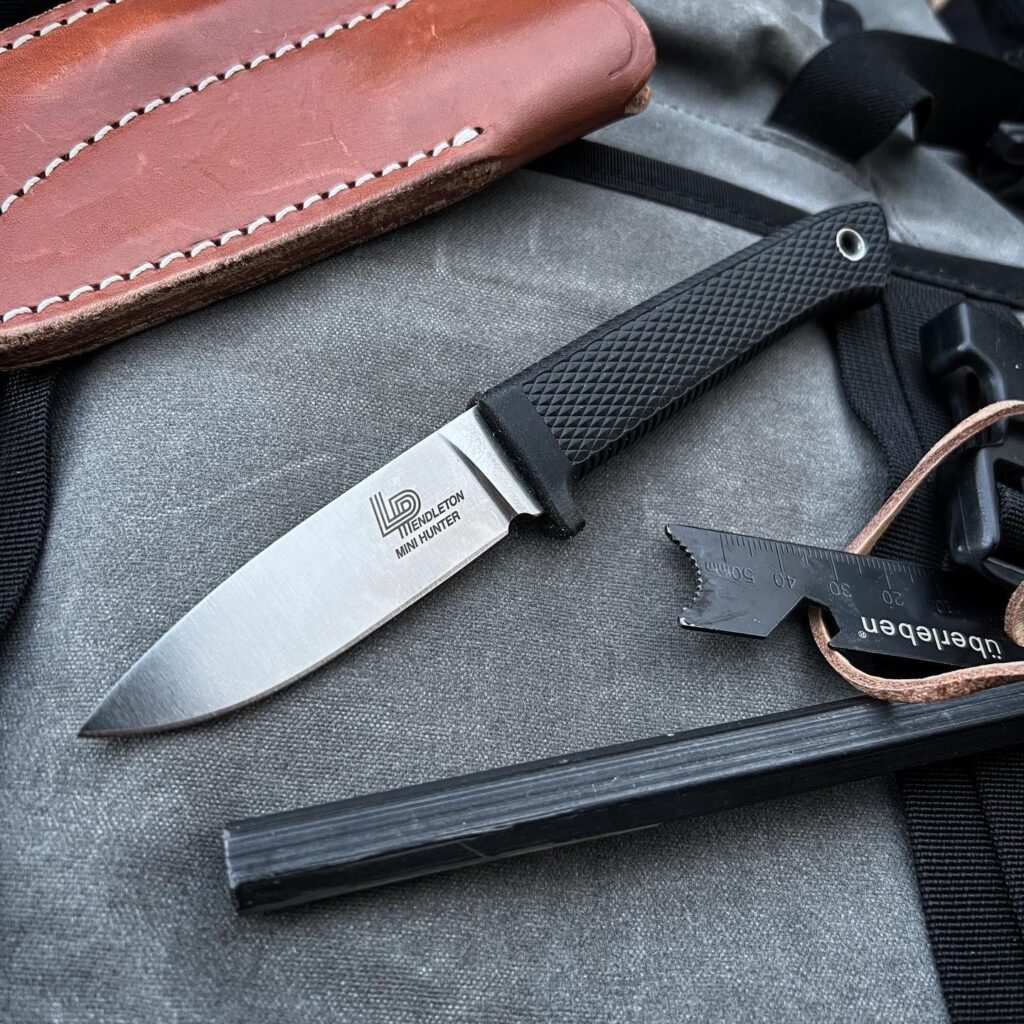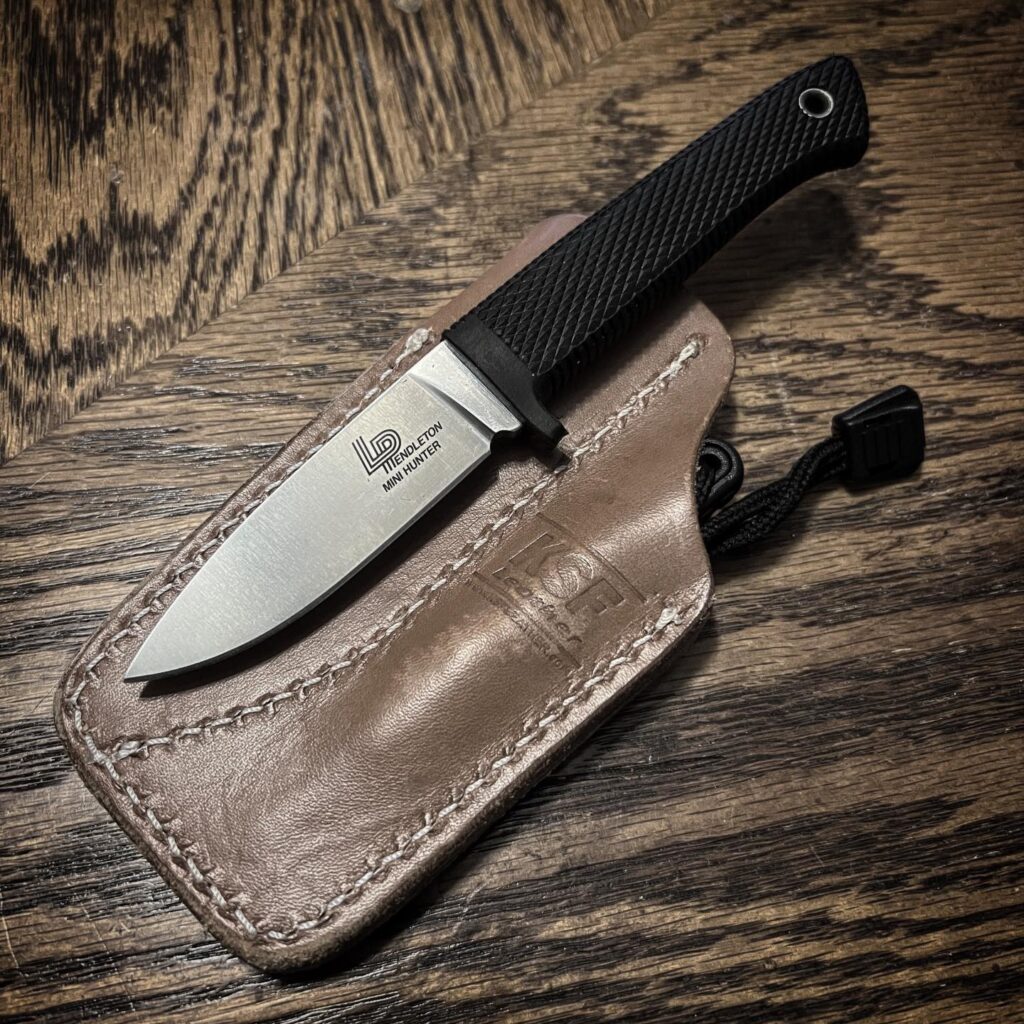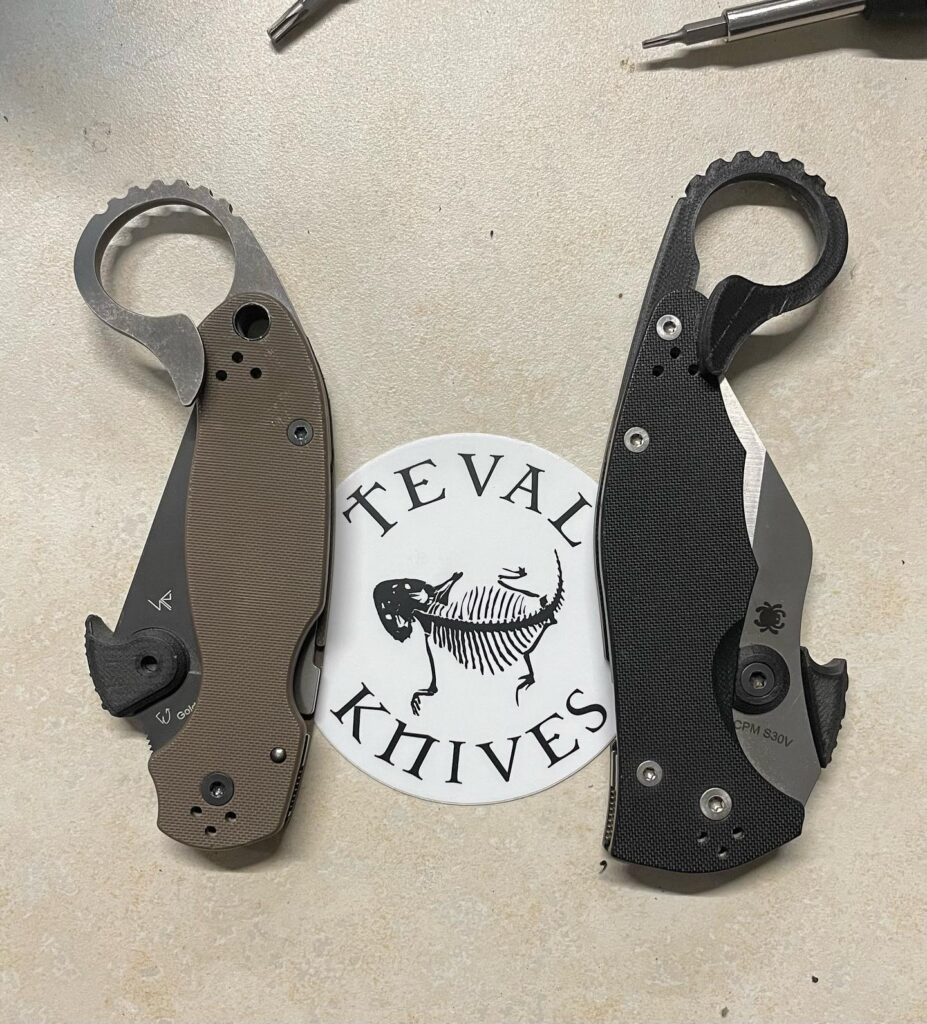I’ll just spoil this review up front. Vosteed provided me a Raccoon with cross-bar lock for review and I think it is an exemplary knife. It isn’t just great for it’s price. It’s great at any price. It’s great, period. The Raccoon shows what a knife company can do when they design for simplicity and get everything just about right.
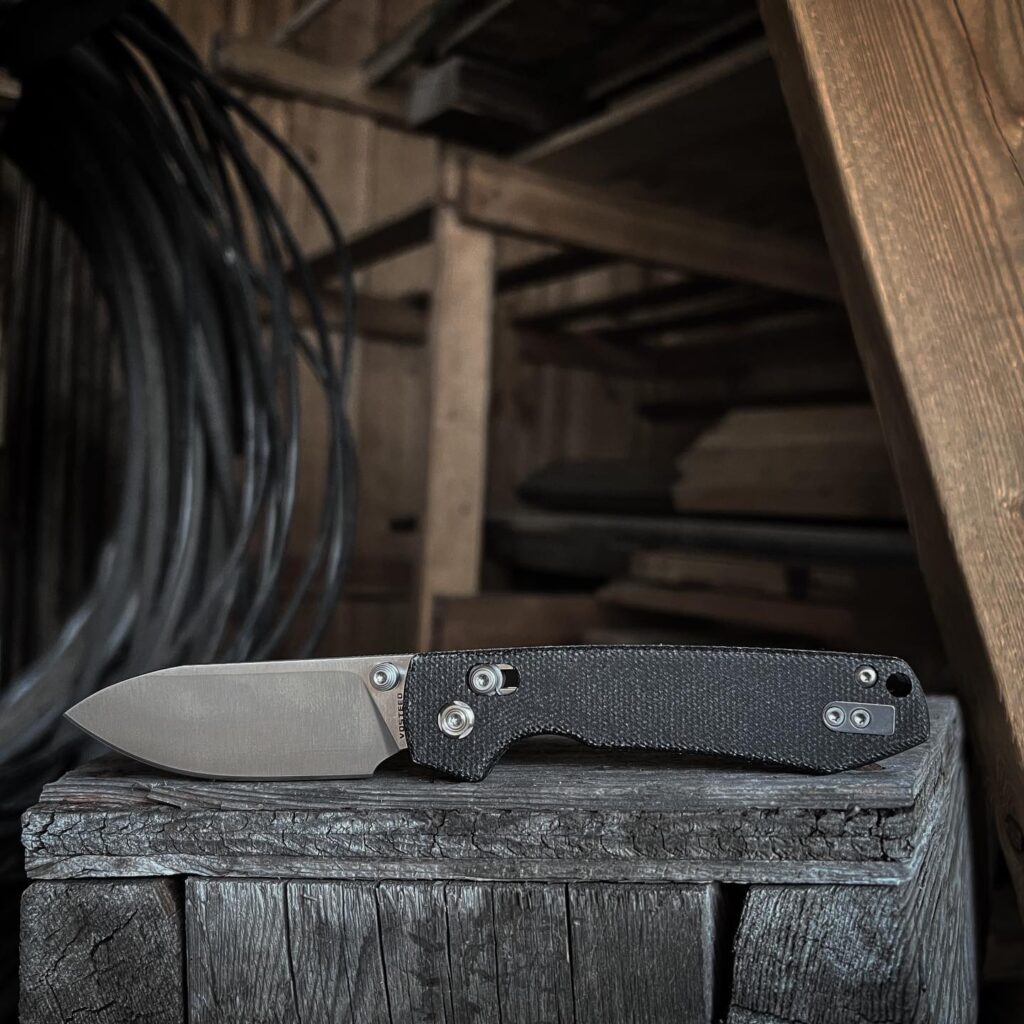
Stats
Overall Length: 7.60″ | 193.12 mm
Blade Length: 3.25″ | 82.55 mm
Blade Width: 1.07″ | 27.27 mm
Blade Thickness: 0.125″ | 3.20 mm
Blade Material: 14C28N
Grind: Flat
Blade Style: Drop Point
Hardness: HRC 60±2
Handle Length: 4.36″ | 110.75 mm
Handle Width: 1.10″ | 27.95 mm
Handle Thickness: 0.49″ | 12.4 mm
Weight: 3.06 oz | 86.8 g
Opener: Thumb Stud
Lock Type: Crossbar Lock
Pivot Assembly: Caged Ceramic Ball Bearing
Pocket Clip: Reversible | Stainless Steel
Carry Position: Tip-up
There are other finishes and handle materials available but my review sample has a satin-finished blade and black micarta handles.
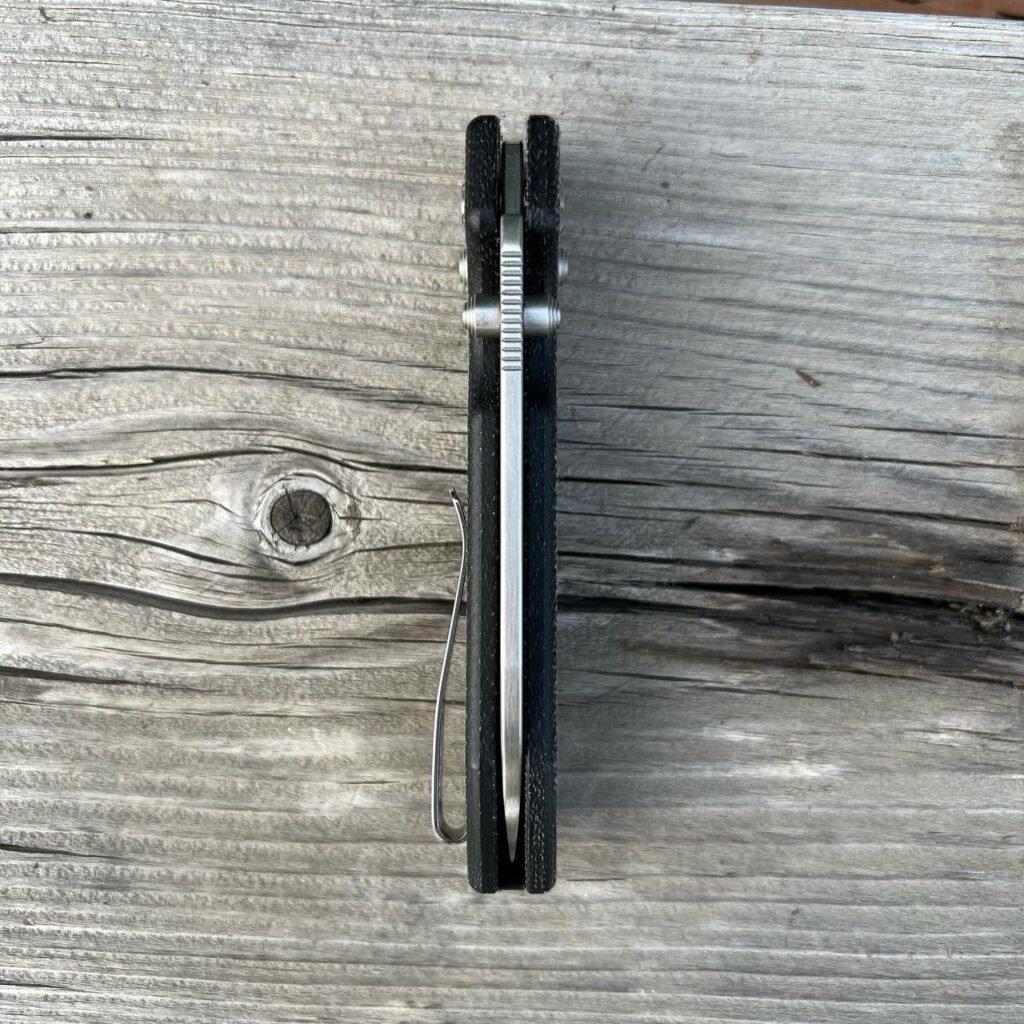
Observations from Use
The Raccoon goes hard out of the gate with its first impression. It comes in a nylon knife pouch which itself is inside of a tin. There are stickers and two patches included in the tin along with a set of spare omega springs for the cross-bar lock which is GREAT. The inclusion of spare springs is a great way to show attention to detail. These springs don’t break as commonly as internet goobers would have you think but having spares is nice.
I would say that, if the Raccoon was a sports team, the blade would be the MVP. Vosteed ticked every box. 14C28N steel is perhaps the best budget steel of all time with its balance of edge resistance, toughness, stain resistance, and sharpenability. The .125″ stock and nearly full-height flat grind means the blade is slicy but also plenty stout. The drop point (almost spear point) shape is versatile with both plenty of point and lots of straight edge near the handle for high leverage cuts. It’s topped off with a crowned spine and perfect jimping. This is the kind of blade that should appeal to everyone. It cuts so well… very, very well.
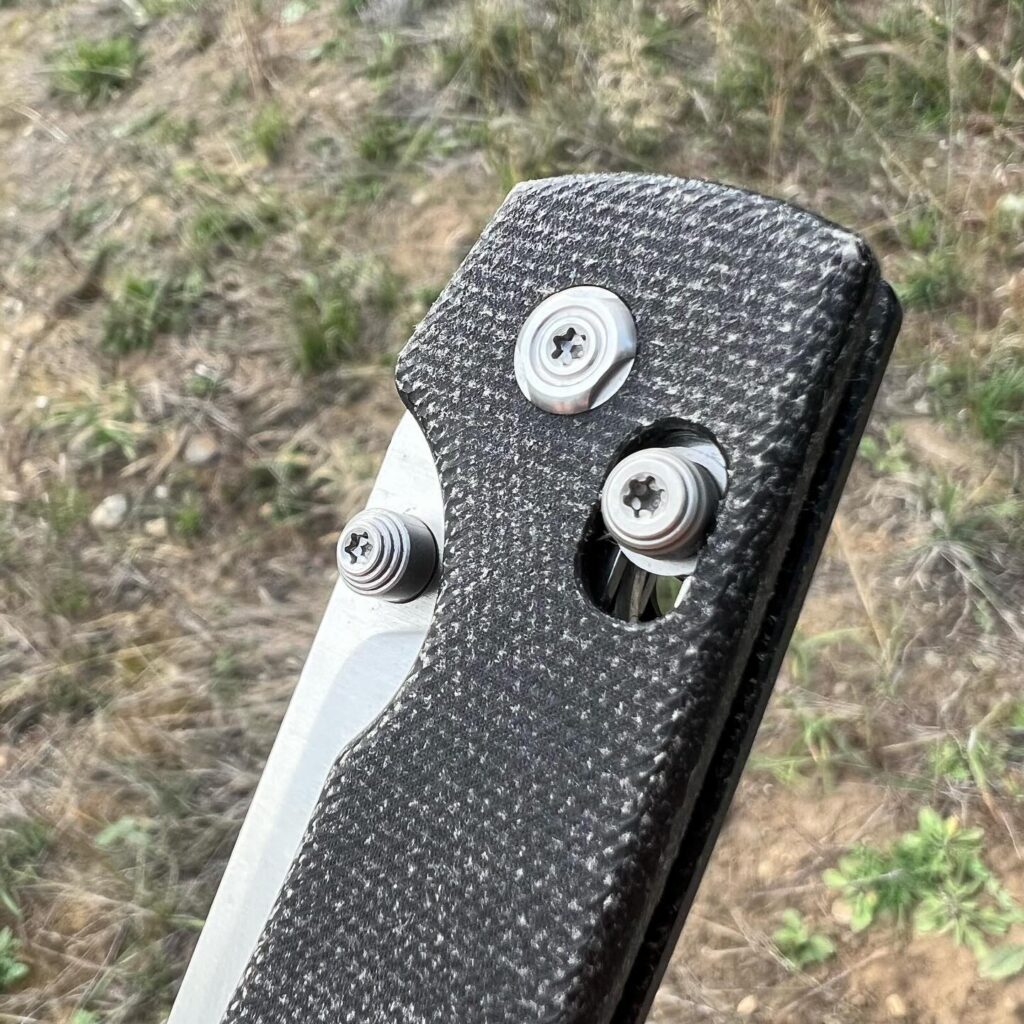
The handle shows just as much attention to what the knife users want as the blade. The canvas micarta they have sourced for these knives is great – attractive and almost velvety to the touch (in a grippy way). A peek underneath those micarta slabs reveals fully nested, skeletonized steel liners. The matching micarta backspacer is another surprising and welcome touch for a knife at this price. This handle has very little flex while keeping the weight of the knife to right at 3 ounces.
The details and commitment to simplicity continue with the hardware. The clips is reversible and nested into the handle with flush screws. The Raccoon comes with a clip plate for the non-clip side. The pivot has machined flourishes and there is just a single body screw to make disassembly easy.
The handle feels very warm and comfortable in the hands thanks to heavily rounded edges. In fact, every touch point is comfortable on the Raccoon – even the thumb studs which are grippy (but not sharp) and very easy to access…
And you will want to access those thumb studs because Vosteed did some real magic with the action of this knife. It flicks very well and makes satisfying chunky noises while doing it. If you have tried to flick open some cross-bar lock knives, you know the action can be mushy since the lock itself provides the detent action. The Raccoon flicks up and swings shut very well in spite of this which is a testament to how Vosteed tuned the tang of the blade to interact with the lock.
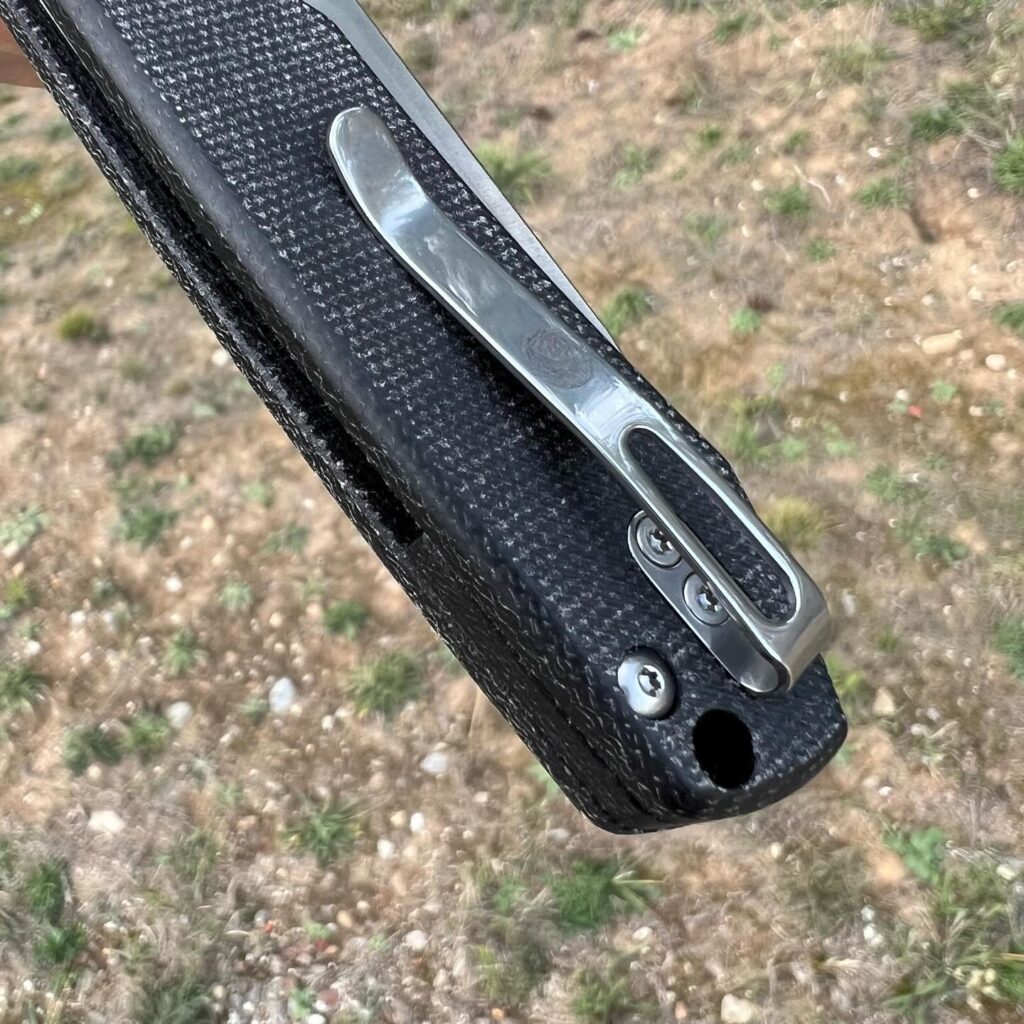
My impressions of this knife are overwhelmingly positive but I think it could be even better. Admittedly, the following items are my own personal preferences but there are changes (or maybe just a different version) I would like to see, nonetheless. If I had my druthers, this knife would be available with bronze washers instead of ball bearings in the pivot since I tend to use my knives in dirty, dusty jobs around hour property. This design lends itself to that kind of work and it would be nice to seal more of that grit out of the pivot. Additionally, the current shape of the grip allows the user to choke up behind the edge but it would be nice if the transition from grip to choil was more flush to make this even more usable.
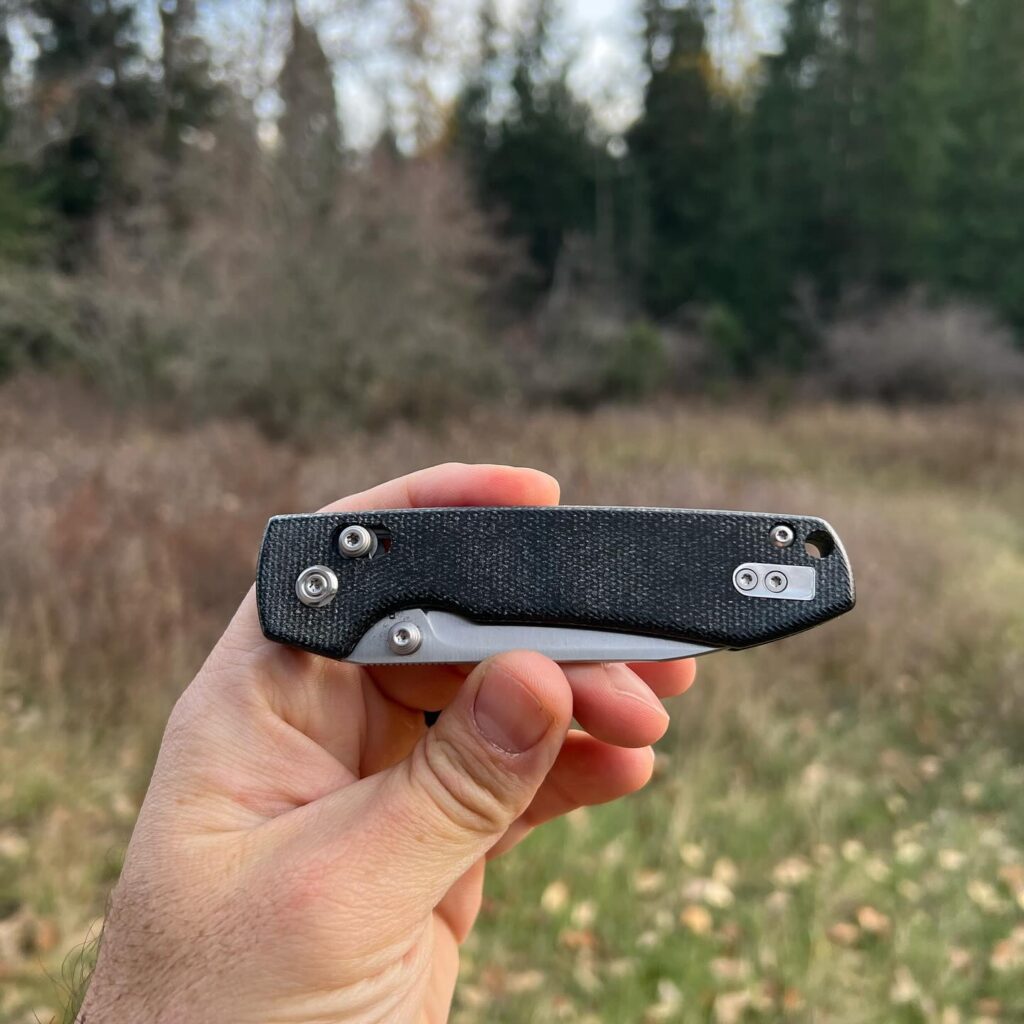
Wrap Up
If you get a chance to handle a Vosteed Raccoon in person, don’t miss it. It makes a great first impression. I almost can’t believe what this knife offers for the price and I don’t mean the blingy things other companies try to pass off as value. The Raccoon doesn’t try to justify its price with flashy colors or the veneer of luxury. It just gives you exactly what you want as a knife user – good steel, good geometry, comfortable touch points, rugged materials, and some style at a very attractive price.
You can learn more at Vosteed.com
Or check out the Raccoon Cross-Bar Lock (on sale for 10% off at the time of this writing) at Amazon.com.

